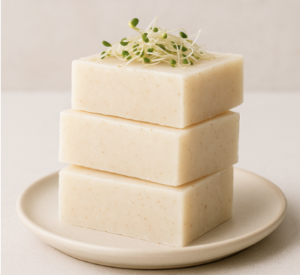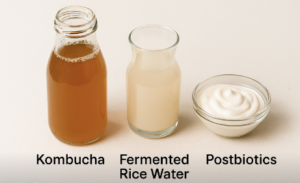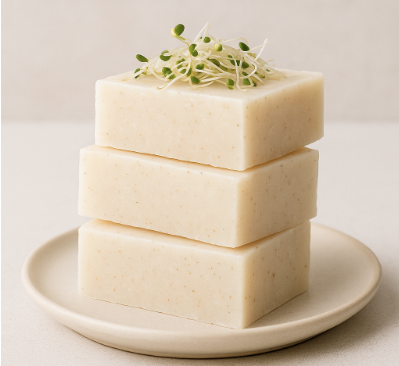
Natural soap making has always been rooted in simplicity, tradition, and the use of wholesome ingredients. But in 2025, consumer demand and industry trends are shifting in exciting new directions. From upcycled botanicals to fermented actives and waterless formats, soap makers and eco-conscious skincare enthusiasts are embracing innovations that are better for the skin and the planet.
If you make soap at home—or simply enjoy learning about natural body care—these are the top trends to watch (and try) this year.
Why Natural Soap Trends Matter in 2025
Over the last few years, the natural skincare industry has grown rapidly. People are more aware than ever of what goes into their personal care products, and they are searching for solutions that are:
- Sustainable: less waste, less plastic, and fewer harsh chemicals.
- Functional: ingredients that don’t just cleanse, but also nourish and protect.
- Innovative yet natural: embracing cutting-edge trends while staying true to eco-friendly values.
This shift makes 2025 a perfect time to explore new ingredients and sustainable practices in soap making. Not only can you create beautiful, functional bars, but you’ll also stay ahead of what customers are actively searching for online—boosting your reach and visibility.
Top Natural Soap Ingredients in 2025
1. Upcycled Ingredients
Waste reduction has become one of the hottest trends in skincare. Soap makers are finding creative ways to incorporate upcycled ingredients—materials that might otherwise be discarded—into their recipes.

- Coffee Grounds: perfect for exfoliation, with natural antioxidant benefits.
- Fruit Peels: like orange or lemon zest, adding scent and vitamin-rich properties.
- Nut Shells or Seeds: ground for gentle scrubbing action.
Why it works: Upcycled ingredients tell a sustainability story, making your soap not just functional but also eco-conscious. Consumers love products that reduce waste while enhancing skincare.
2. Fermented Actives & Postbiotics

Fermented ingredients are taking center stage in 2025, moving from high-end skincare into the DIY and soap-making world.
- Kombucha Infusions: add antioxidants and help support skin balance.
- Fermented Rice Water: a centuries-old beauty secret, known for brightening.
- Postbiotics: beneficial byproducts from fermentation that help strengthen the skin barrier.
Why it works: Fermented ingredients support the skin microbiome, improving hydration and resilience—perfect for gentle, nourishing soaps.
3. Adaptogenic Herbs & Mushrooms
Adaptogens—herbs and fungi that help the body adapt to stress—are crossing over from supplements into skincare.
- Reishi Mushrooms: anti-inflammatory, soothing properties.
- Ashwagandha: antioxidant-rich and calming.
- Holy Basil (Tulsi): helps balance skin tone and reduce stress impact.
Why it works: With the growing focus on stress management, adding adaptogens to soap gives your products a wellness connection that resonates with modern consumers.
4. Local Botanicals & Heritage Ingredients
Soap makers are increasingly turning to locally harvested and culturally rooted ingredients.
- Wild herbs like chamomile, yarrow, or calendula.
- Regional clays (French green clay, Canadian glacial clay, etc.).
- Heritage oils (olive, hemp, sunflower) that tie into tradition.
Why it works: Locally sourced botanicals support sustainability and connect your soap to regional identity and heritage—something buyers value more each year.
Sustainable Soap Making Practices in 2025
The way soap is packaged, formulated, and marketed is just as important as the ingredients inside.
1. Waterless & Concentrated Soap Formats
From shampoo bars to powdered facial cleansers, waterless skincare is booming. Solid and concentrated soap options:
- Reduce plastic packaging.
- Last longer than liquid alternatives.
- Appeal to zero-waste and minimalism lifestyles.
2. Eco-Friendly Packaging
Consumers are choosing brands with low-waste or plastic-free packaging. Options include:
- Compostable wraps made of plant-based materials.
- Glass jars for refill systems.
- Seed paper labels that can be planted after use.
3. Ethical Sourcing
More people are asking tough questions about where ingredients come from. Soap makers can:
- Use palm-free bases or certified sustainable palm oil.
- Support fair-trade shea butter, cocoa butter, and oils.
- Share sourcing stories on product labels and websites.
DIY Ideas: Try These Trends at Home
Want to experiment with these 2025 trends in your own soap kitchen? Here are a couple of ideas:
Coffee & Orange Upcycled Soap Recipe (Beginner-Friendly)
- 2 tbsp used coffee grounds (dried)
- 1 tbsp dried orange peel zest
- Your favorite cold process or melt-and-pour soap base
Mix the coffee grounds and orange zest into the soap base before pouring into molds. The result? A refreshing, exfoliating bar that reduces waste and smells wonderful.
Reishi & Lavender Calming Soap (Intermediate)
- 1 tsp reishi mushroom powder
- 1 tsp lavender essential oil
- Olive oil and coconut oil base (cold process method)
This adaptogen-inspired bar combines soothing mushroom powder with calming lavender—a perfect 2025 wellness bar.
FAQs: What People Are Asking in 2025
What are upcycled ingredients in soap?
Upcycled ingredients are natural materials that would otherwise be discarded, like coffee grounds or fruit peels, repurposed for skincare.
Are fermented ingredients safe for soap?
Yes—fermented extracts and postbiotics are safe for topical use and may help improve skin hydration and balance.
Why is waterless soap better for the environment?
Waterless soap formats like bars or powders reduce packaging waste, last longer, and cut down on the need for plastic bottles.
Final Thoughts
The natural soap world is evolving fast, with 2025 bringing a wave of eco-conscious and innovative trends. Whether you’re experimenting with upcycled exfoliants, fermented postbiotics, or adaptogenic herbs, the opportunities for creativity are endless.
By focusing on sustainable practices and trending natural ingredients, you’ll not only craft beautiful soap but also connect with what people care about most: healthier skin and a healthier planet.
© 2025, Tes. All rights reserved.


I really enjoyed reading your post—it’s so inspiring to see how natural soap making is evolving in 2025! I love the emphasis on upcycled ingredients like coffee grounds and orange zest, which are both eco-friendly and skin-nourishing. The focus on fermented actives and postbiotics is equally exciting—using kombucha infusions or fermented rice water to support the skin microbiome feels so innovative and effective. And bringing adaptogens like reishi, ashwagandha, and holy basil into soap is a wonderful idea—it links skincare with wellness in such a meaningful way. I’m also curious about your thoughts on packaging—those compostable wraps and seed-paper labels are genius for eco-conscious brands. Have you experimented with any of these trends yourself, and if so, which one surprised you the most in terms of performance or consumer reaction?
Thank you so much—I’m glad you enjoyed it! I’ve been experimenting with a few of these trends, and the one that surprised me most was fermented rice water in soap. It gives such a lovely feel to the lather, and people are really intrigued by the skin benefits. Packaging is definitely an area I’m excited to keep exploring too!